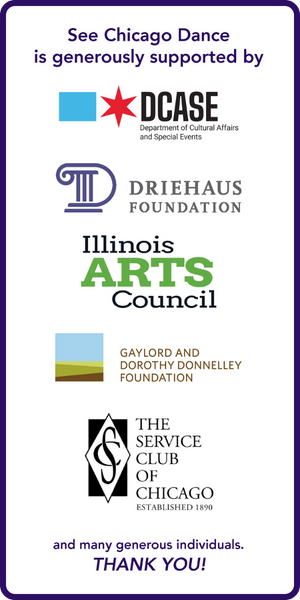August 10, 2025
By Lynn Colburn Shapiro
Dance for Life, an annual Chicago dance celebration since 1992, is Chicago’s unique gift to the world. Dance for Life has become a model for dance festivals world-wide, and no other compares in scope, mission, fundraising capacity, or impact on audience development, community building, and financial aid for artists in need. It is also, hands down, my favorite Chicago dance event of the year.
Thirty-three years ago, Keith Elliott, then a dancer with the Joseph Holmes Chicago Dance Theatre, witnessed the devastating effect of the HIV/AIDS crisis on the dance community and decided to do something to help. He put out a call to dance companies and individual dance and dance-related artists throughout Chicago to donate their time and talent to a one-night performance, a fundraiser to be held at the Organic Theater. The response from the Chicago dance community was overwhelming and resulted in an annual event, what has now evolved into Dance for Life. Harriet Ross, Danny Kopelson, Todd Kiech, and Gail Kalver were also integral to the initial development of Dance for Life and what is known today as Chicago Dancers Health Fund.
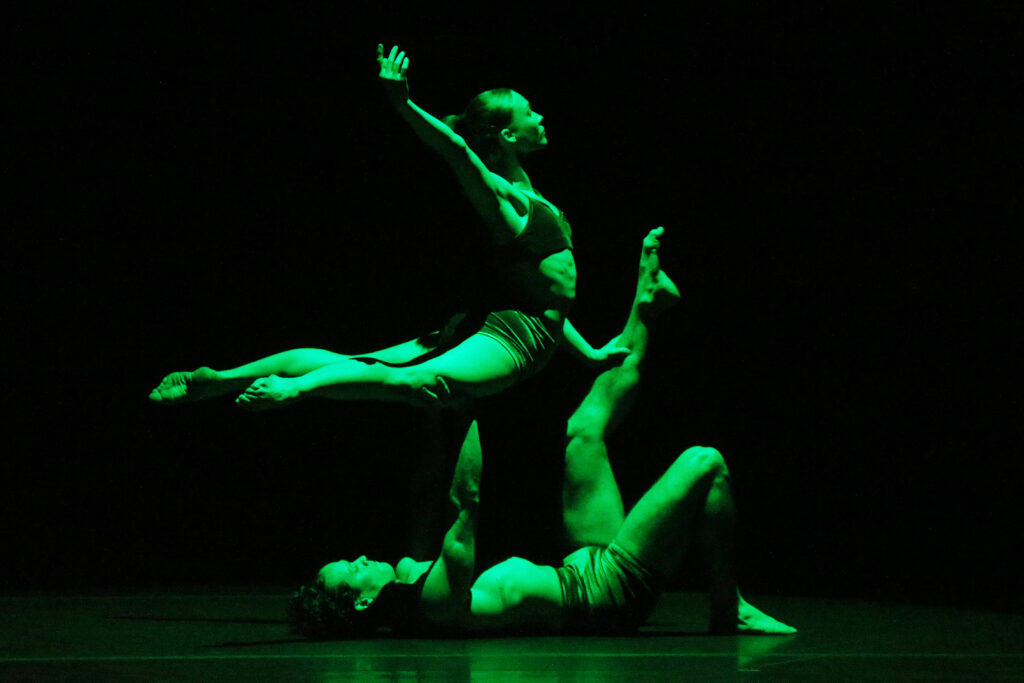
What’s new and exciting about Dance for Life this year? “Continuing the legacy,” says Michael Anderson, vice-president of Dance for Life’s Board of Directors. He adds that this year is the first time that there will be ten companies represented on stage. “One of the goals is to feature as many new companies as possible,” he said in a recent telephone interview. He is especially excited about the grand finale, which will be choreographed and staged by Jonathan E. Alsberry (Jojo).
“Dance for Life creates community across the footlights,” said Alsberry, in his second year as finale choreographer. “Having lived in New York City for fifteen years,” he reflected in a recent phone interview, “there’s something about Chicago that is so innate, that we connect on the street and with our neighbors, and I always knew that.” This is an especially poignant return for Alsberry, who continues as a senior rehearsal director for Hubbard Street Dance Chicago and currently dances with Aszure Barton and the Lar Lubovitch dance companies. Alsberry first performed in Dance for Life in 2004, and each time he has been in Randy Duncan’s finale. This year, he will participate as a choreographer only. His focus for the finale, he says, is centered on “family, the ones we have chosen, the ones we have inherited.” As a visual prompt to the dancers, he asked them to “think about a flock of birds or butterflies… When you see a group, you don’t think about them as family, and yet they are!” he marveled. He will be herding a flock of sixty-some dancers onstage—the most ever in a finale.
The finale, of course, is emblematic of Dance for Life in general, the culmination of one night’s performances and a launching into the future, invigorating both artists and audience members to carry the spirit of Dance for Life back to their families, their neighborhoods, and their communities.
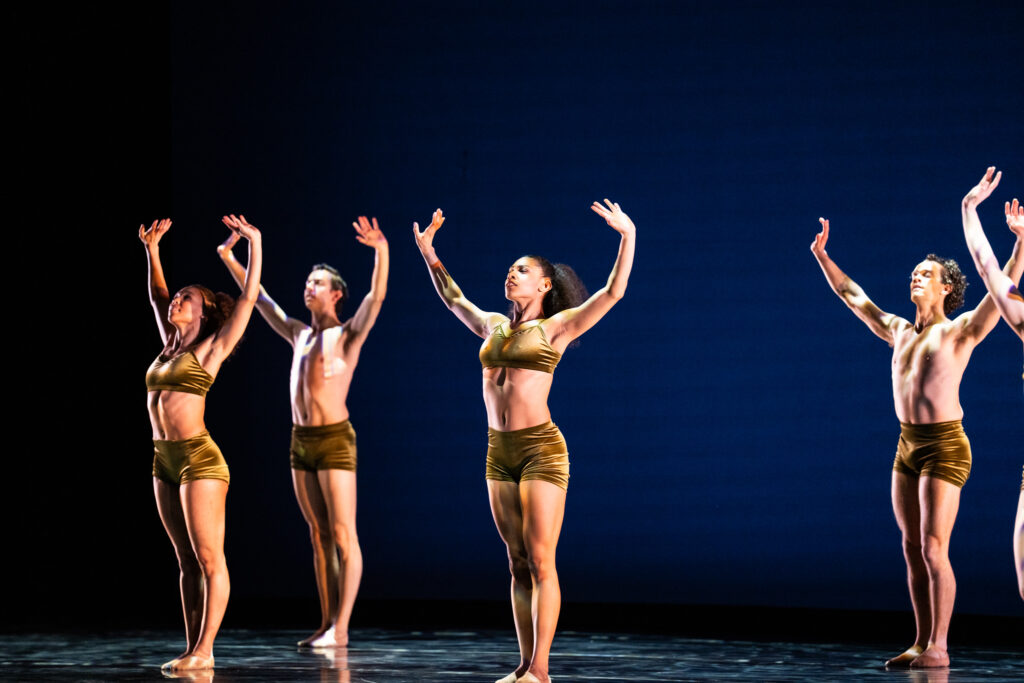
The Joffrey Ballet, Hubbard Street, and Giordano Dance Chicago are the three anchor companies that perform annually at Dance for Life. A record number of 10 companies will be performing this year, including Trinity Irish Dance Company, Deeply Rooted Dance Theater, Chicago Tap Allstars, Movement Revolution Dance Crew, South Chicago Dance Theatre, Visceral Dance Chicago, and Aerial Dance Chicago, which appears at Dance for Life for the first time.
Kia Smith, artistic director of South Chicago Dance Theatre, is “honored for our company to be returning to Dance for Life for the third time.” They will perform Frank Chaves’ piece, “Temporal Time” (1998), which Smith first saw as a student at Western Michigan University in 2009. Having Frank set his piece on her company today is a special thrill. This staging of the piece features eight dancers—four men and four women—with costumes by Jordan Ross, which is “so special” Smith said, because they were able to borrow the original capes from the Chicago Academy for the Arts. Smith, who hasn’t performed in seven years, will dance in Alsberry’s finale this year. “Jojo is great,” she says. “He makes everything really fun!” A side note—Starting their 9th season, SCDT will perform at the Harris Theater for one night only in May of 2026.
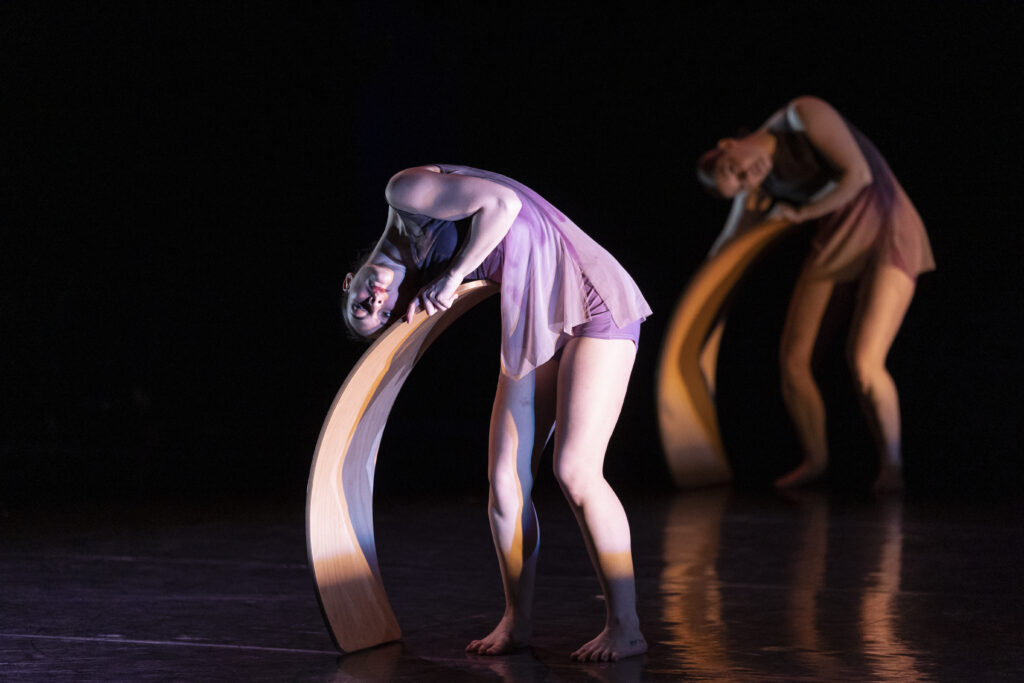
“Rigging is challenging,” mused Aerial Dance Chicago Founder and Artistic Director, Chloe Jensen, but their company’s first performance in Dance for Life is grounded, with the use of some props. Make no mistake, they insist, Aerial Dance Chicago is “first and foremost a dance company!” They will perform “Arc of the Heart,” a piece inspired by the coinciding Pandemic and the loss of their mother. Jensen originally created the piece for Dance in the Parks as an all-male piece. It will be performed at Dance for Life by 7 women, each with a wooden “curve board.” The music, by Susie Suh and RobotKoch “really spoke to the feeling of the presence of someone you’ve lost,” she reflected over the phone recently. “There’s joy in that connection,” Jensen said. “Even though it sounds like a sad topic, it really comes across as uplifting…It’s not about the tricks. My passion is to take dancers into flight!”
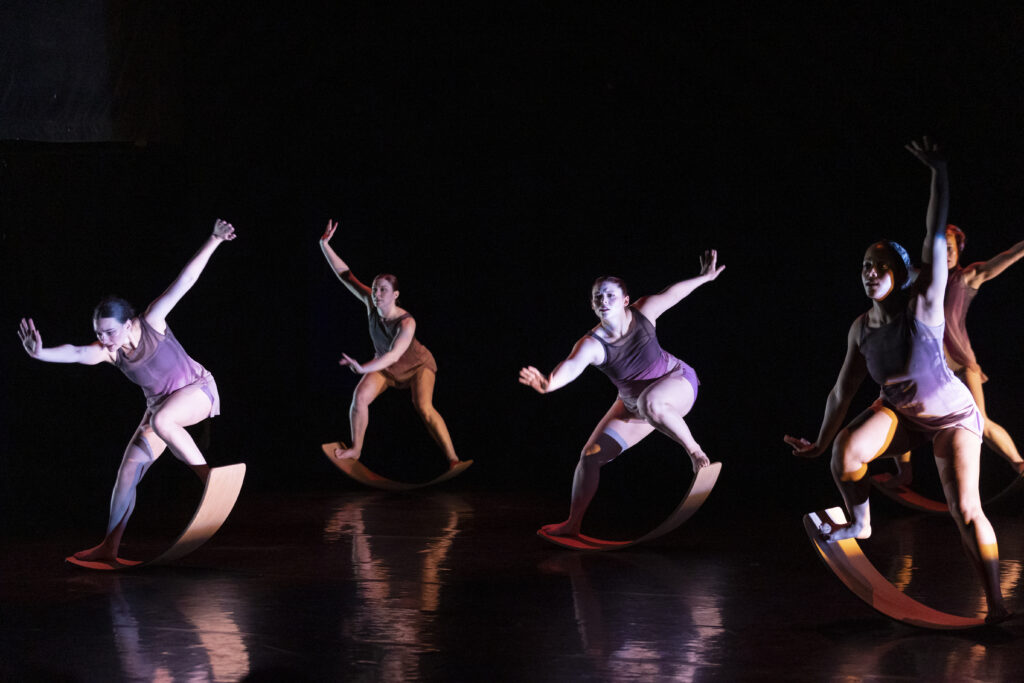
Trinity Irish Dance Company had just returned from its residency at the Jacob’s Pillow Dance festival when I interviewed Chelsea Hoy, Trinity’s Associate Artistic Director, for See Chicago Dance. It was the first time in its history that The Pillow had presented a full evening of Trinity. It was a historic moment for Chicago dance, with Chicago’s Hubbard Street and Red Clay companies also represented. “Irish step dancing had never been accepted as serious dance,” Hoy said, until Trinity. When asked what changed that, artistic director Mark Howard, who joined the phone interview half-way through, said “percussive dance artist Michelle Dorrance certainly has had an impact.” Howard and Trinity have forged a unique path toward recognition of step dance as a legitimate concert dance form. “We are so excited to come back,” Howard said. The Auditorium is Trinity’s home. The company will be performing “A New Dawn” (1996), with up to 16 female dancers in black opaque tights and “breakfast at Tiffany’s” couture gloves. The soundtrack is traditional Irish music and is loosely based on social dancing. “It’s the folk dance of the future on speed,” he said. Two male dancers will appear, “for fun,” Howard said. Dance for Life reminds Howard of Hemingway’s “A Moveable Feast”: “We don’t merely educate and entertain. It’s very rare. [Dance for Life] is the rich emotional core, cultivated over years, [that] has led to a concert where everybody’s bringing their A-game!”
“The fun part is designing,” says production manager Margaret Nelson, in her thirtieth year with of Dance for Life. “I enjoy working with dancers,” she says. “The form, putting light on dancing bodies. It’s such a pure art form!” She begins by watching rehearsals. “I start thinking of textures, patterns and colors,” she said over the phone recently. “It’s a constantly learning experience for me.” Multimedia has finally become more financially feasible, she explained. It’s another layer of magic and a visual element for her to play with.
Since its inception, Dance for Life has succeeded not only as the stellar fundraising and dance performance event of Chicago’s annual dance calendar, but as an opportunity for both established and fledgling companies to gain needed audience exposure and public recognition. Dance for Life brings together the many dance genres that thrive in Chicago, highlighting the cultural uniqueness of Chicago’s diverse communities, and uniting an audience of vastly differing traditions in celebration of an art form that transcends cultural boundaries.
Dance for Life is presented by the Chicago Dancers’ Health Fund on Aug. 16, 6pm, at The Auditorium, 50 E Ida B. Wells Dr. For tickets and more information, visit the event page by clicking HERE.
Copyright 2025, See Chicago Dance, All Rights Reserved
